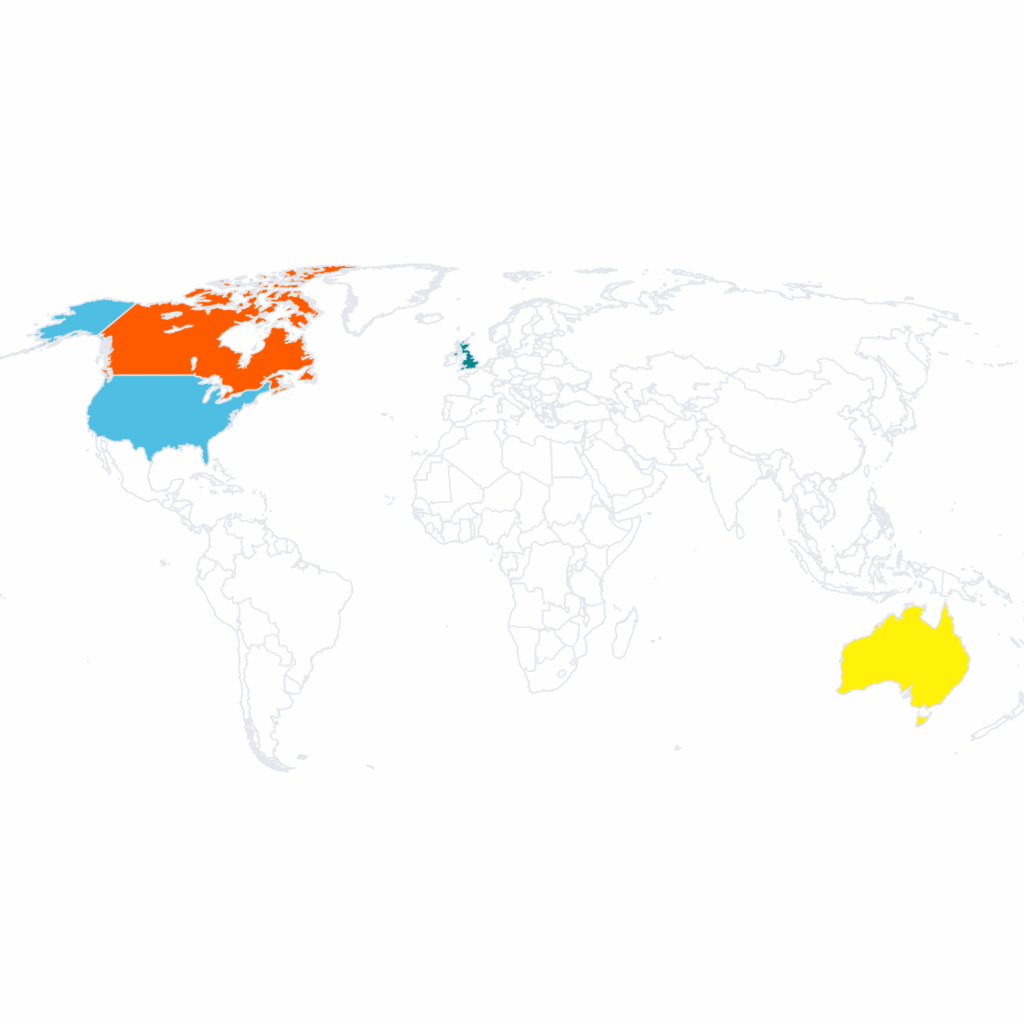
The 2025 State of the Photography Industry report reveals insights into the business models, revenue strategies, and market trends shaping photography businesses.






The 2025 State of the Photography Industry survey, our 6th since 2021, offers a comprehensive look into how photographers are adapting to a rapidly changing landscape. This year’s insights go far beyond statistics—they unveil the real-world challenges and opportunities shaping the photography profession. From the increasing impact of AI to the evolving needs of their clients, this report examines how photographers are confronting obstacles, innovating, and creating their own unique paths to success.
Key Findings
Personalized Service Drives Revenue
Photographers who offer in-person viewing appointments after their shoots or sessions can experience up to a 20% increase in revenue.
Diversification is on the Rise as Photographers Seek Stability
Approximately 10% of photographers now operate across multiple business models (Client-based, Event/Sport-based, and Art/Production-based), indicating a trend toward diversification as a stability strategy.
Flexibility Creates Opportunity
Photographers who adapted to unexpected opportunities—particularly in sports/event photography, corporate work, and specialized niches—reported finding valuable new revenue streams outside their original specialties.
Raise Your Prices
While 65%-77% of photographers reported increased business costs in 2024, pricing increases haven’t kept pace. This growing gap poses a potential threat to profitability that photographers must address through strategic pricing.
Print is Not Dead
Newer photographers rely heavily on digital file delivery, while established photographers generate significant revenue through print sales. Implementing print credits instead of bundling digitals represents an opportunity for novice photographers to boost profitability.
The 2025 State of the Photography Industry report reveals insights into the business models, revenue strategies, and market trends shaping photography businesses.
It also provides actionable insights for photographers at every stage in their careers to help enhance profitability, adapt to market changes, and position their businesses for growth in 2025.
TABLE OF CONTENTS
DEMOGRAPHICS, EMPLOYMENT, AND EQUIPMENT
DEMOGRAPHICS
The general demographics of photographers remained consistent year over year, though we saw some new countries join the mix.
North American respondents accounted for 79% of our survey, up slightly from 78% last year, while Korea and Bolivia made their debut among new reporters.
Photographer Roles
While there were minor shifts in either direction compared to last year, professional roles in the industry remained largely the same.
of respondents consider themselves photographers and don’t shoot video.
▲ 2.5% from last year
of respondents consider themselves photographers & videographers.
▼ 0.24% from last year
EMPLOYMENT
One promising trend from the survey is that the number of full-time self-employed photographers has been trending upward—a sign of opportunity in the market.
The photography specialties also stayed relatively constant, with the children’s and newborn specialties seeing the most significant percentage change compared to last year.
Full-time vs Part-time Employment
Photography Specialties
|
Primary Specialty |
% change over last year |
|---|---|
|
Baby/Children/Toddler/Newborn |
2.57% |
|
Equine |
0.92% |
|
Family |
0.87% |
|
Real Estate |
0.83% |
|
Sports |
0.79% |
|
Architecture |
-0.38% |
|
Portrait |
-0.74% |
|
Landscape |
-0.84% |
|
Wedding |
-0.89% |
|
Documentary |
-1.00% |
EQUIPMENT
This year, we changed how we asked about equipment, allowing photographers to select multiple options and introducing drone photography for the very first time.
The biggest take away?
While mirrorless camera usage saw a slight dip, the combination of smartphone and camera usage increased significantly.
Camera Usage
Camera Usage by Year
Another interesting finding:
Drone photography is now more commonly used than phone cameras among professional photographers!
*Newly added to the 2024 survey are drones and the ability to select multiple equipment types. The comparison excludes drones and applies a weighted distribution.
2024 Equipment Usage
A MORE INCLUSIVE LOOK AT THE INDUSTRY
Over the last five years, the State of the Photography Industry Survey has gathered feedback from tens of thousands of photographers across the globe. Our mission has always been to highlight trends and provide actionable insight into the business of photography. However, we recognized a gap in the data—by focusing on more popular genres like Portrait or Wedding photography, we unintentionally discounted smaller, yet equally essential genres like Dance or Fine Art.
A MORE INCLUSIVE APPROACH
This year, we fine-tuned our methodology to capture a wider representation of the photography industry. Rather than simply categorizing photographers by specialty, we asked participants to define which business model more accurately described the focus of their profession. This new approach allowed us to highlight the diverse ways photographers work, resulting in more meaningful and specific results. Here is a look at how we categorized the individual business models:
Business Model
Approach
Examples
Client-Based
Highly personalized sessions and customized products to a small number of clients
Weddings, Family, Seniors, Portraits, Baby
Event/Sport-Based
Standardized or shorter sessions—often with a large number of participants
Team and Individual, Dance, Football, School
Art & Production-Based
Creating thematic works, conceptual works, and/or fine art images, often but not always self-directed
Fine Art, Commercial, Photojournalism, Editorial
The classifications presented in the poll were as follows:
- I primarily offer highly personalized sessions and customized products to a small number of clients, such as families, weddings, individuals, realtors, and other clients.
- I typically photograph larger groups or multiple participants, offering standardized or shorter sessions—often with a large number of participants like events, school/yearbook photography, sports teams, dance recitals.
- My focus is on creating thematic works, conceptual works, and/or fine art images, sometimes with clients but often self-directed, like with wildlife, landscape, or architecture. I may sell prints, art pieces, or specialized creative projects.
THE MULTI-DISCIPLINED
PHOTOGRAPHER
The importance of this approach becomes clear when we look at how photographers balance several disciplines. When given just three specializations, the data skewed heavily towards Client-based photography, as you can see in the graph below.
Breakdown by Specialty
However, breaking down the categories by business model, we see a significantly more diverse industry representation. About 10% of the respondents don’t operate professionally under one creative focus—they shift between client-based work, art, and event photography. This segment represents a dynamic and adaptive evolution in the photography world.
Business Model Breakdown
Unlike other photographers who remain within a single business model, these individuals may benefit from:
- Seasonality: Pursuing seasonal sports events during wedding off-season
- Diversify revenue sources: Supplement gallery shows with client work
- Maximize equipment investment: Use equipment and software for multiple types of assignments
- Income stability: Reduce the worry of financial uncertainties by casting a wider net
What This Means in 2025:
This group’s adaptability will be tested as we navigate the unpredictable economic climate over the next year. In 2026, we will revisit this group to assess whether its adaptability led to opportunities for growth or posed new, unforeseen challenges.
This multidisciplined 10% will be an interesting cohort to watch over the next year. Will this group prove to be the most resilient in the industry as they shift from business model to business model? Only time will tell.
Looking Ahead: Better Insights in 2025 and Beyond
Going forward, we’ll use this refined framework to provide more meaningful, actionable insights—not just for the most common photography genres but for photographers across all spectrums industry-wide.
By broadening our approach, we hope that more photographers will gain valuable insights, identify emerging opportunities, and feel better equipped for success in 2025 and beyond.
FINDING NEW BUSINESS OPPORTUNITIES

FINDING NEW CLIENTS

GETTING FOUND ONLINE

PRICING, SERVICES & PRODUCTS

SELLING PRINTS & PRODUCTS
Challenge vs Opportunity
In 2024, as in previous years, most photographers reported that finding new clients was their biggest challenge. This year, we asked photographers about any new or surprising opportunities.
Stability in Institutions
Photography for sports, schools, and events offered financial stability during times when there was a lack of individual bookings.
Personal Connections
Word of mouth remains the primary business driver, even with the rise of digital marketing.
Flexibility Wins
Many photographers found success by taking advantage of unexpected opportunities rather than strictly adhering to their specialty.
Unconventional Niches that Generated Revenue
SUCCESS STORIES
Crossing Specialty Boundaries
Client-based photographer finds stability in school/sport work.
“I was approached (to photograph schools and sports) in 2023, and in 2024—that number grew by a few additional youth sports leagues after a local photographer closed his business to pursue other opportunities. This has been such a fun and exciting pivot in my business and not one I ever saw coming; however, I have loved it. Looking to expand this side of my business even further.”
Family photographer, 9 years.
Wedding photographers diversify focus.
“Weddings were down almost 50%, but Portrait sessions were up 35%.”
Wedding photographer, 16 years.
“I’ve picked up a considerable amount of corporate work compared to previous years. Headshots, stock photos, corporate events and so on.”
Wedding photographer, 14 years.
Unexpected opportunities through personal connections.
“My daughter’s school; her cheer coach was not satisfied with who normally does their pictures for senior cheer girls, so she asked my daughter if I would want to come and do them for the girls. They went really well. All the girls loved them a lot more than the other company.”
Family photographer, 15 years.
“Sports teams and individuals, due to my own children being in sports, increased my smaller sales and added business in slower months in winter.”
Portrait Photographer, 20 years
The moral of the story? Don’t be scared to try out gigs that you haven’t done before. It’s all about stepping out of your comfort zone! Your technical skills and creative eye will transfer across any type of photography. These strange new ventures could become steady revenue streams during your slower periods.
ACTIONABLE TIP
Make a list of your personal and work connections. Identify three potential photography opportunities within these networks.
Business Structure & Workflow
The Revenue Impact of Face-to-Face Interactions
This year, we asked survey participants if they engaged in face-to-face meetings or in-person sales (IPS). Across all photography types, the majority said yes! A compelling pattern emerged when we compared annual gross revenue with these in-person interactions: specific face-to-face interactions significantly boosted revenue.
Where Personal Connection Drives Revenue
How that Compares to 2023
|
Face-to-Face Interaction |
Client |
Event/Sport |
Art & Production |
|---|---|---|---|
|
Viewing Appointments |
+20% |
+13% |
+6% |
|
Product Sales |
+33% |
+18% |
+2% |
|
Consultation |
-5% |
+0.5% |
-17% |
|
Proofing |
-2% |
-6% |
-40% |
|
Product Delivery |
+18% |
-8% |
+31% |
Strategy and Face-to-Face Interactions
The data identified three key moments in the client experience where in-person meetings could significantly boost revenue.

Viewing Appointments
When clients are first presented with their images.

Product Sales
When clients make purchasing decisions based on your expert guidance.

Product Delivery
When the order is delivered to the client, marking the end of the experience.
Asynchronous Interactions
While that one-on-one interaction with your customers is great, not all meetings need to occur in person. If you are clarifying the initial plans for a session or event, consultations can be conducted effectively using questionnaires, emails, or video calls. Proofing is another task that can be completed without a face-to-face interaction. Online galleries with an integrated commenting or messaging system will more accurately record your client’s expectations without the need for a personal get-together.
In an age of Zoom and online platforms for photographers and their clients, strategically choosing which interactions to conduct in person, over video, or asynchronously can help maximize your revenue at the end of the day.
ACTIONABLE TIP
- Calculate your average sales from your last 10 clients.
- Make a note of the sessions that included an in-person meeting.
- Then, set a goal to hold face-to-face interactions with the next five clients.
- Track the results.
Business Performance in 2024
Performance Trends by Business Model
Looking at business performance for the top photography specialties, business was more substantial in 2024. This year saw fewer businesses closing compared to last year, with client-based photography and events experiencing an increase in new business openings.
Business Closures 2023 vs 2024
Business Openings vs Closures by Business Model
With fewer businesses closing and even more opening, setting yourself apart from the competition is essential.
ACTIONABLE TIP
Competition is going to heat up in 2025 and beyond. Start thinking about how to differentiate yourself from your competitors. Search for photographers in your area and start making a competitor analysis document so you can keep track of where you are next to others.
Bridging the Gap Between Costs and Profitability
The Cost of Doing Business
Overall, photographers across genres saw their business costs increase between 6% and 10% in 2024, prompting some to raise their prices. However, these price changes varied significantly, with some photographers making incremental increases while others absorbed rising costs without significant pricing changes.
Cost of Business Compared to 2023
Client-Based Photography
of client-based respondents believe costs increased.
with 40% believing costs increased by 6-10%
of client-based respondents believe costs stayed the same.
of client-based respondents believe costs decreased.
Event/Sport-Based Photography
of event/sport-based respondents believe costs increased.
with 40% believing costs increased by 6-10%
of event/sport-based respondents believe costs stayed the same.
of event/sport-based respondents believe costs decreased.
Art & Production-Based Photography
of art & production-based respondents believe costs increased.
with 32% believing costs increased by 6-10%
of art & production-based respondents believe costs stayed the same.
of art & production-based respondents believe costs decreased.
In response to costs increasing by 6-10%, 30-37% of respondents across the three business models also increased their prices by 6-10%.
ACTIONABLE TIP
If your costs increased but your prices didn’t keep up, evaluate where best to adjust your rates to maintain profitability.
Digital incentives vs Print Credits:
The Experience Divide
The Digital Age
Photographers who are new to the industry are increasingly incorporating digital images when securing bookings with new clients. While this approach is practical for client acquisition, it limits revenue potential after the session. This makes long-term profitability difficult, especially given higher business costs.
Importance of Digital Inclusion
On the other hand, seasoned photographers who have been in business longer are selling more printed products instead of relying solely on digital downloads. The revenue generated from additional print sales helps to offset business costs, providing sustainability even during uncertain financial times.
Best Selling Items
A More Traditional Approach
To reduce the dependence on digital sales, photographers can instead offer print credits at the time of booking a session. For the customer, the perceived value of a print or product is high, while for the photographer, the cost to fulfill is minimal.
For example, you offer a session for $300. The cost of your 5×7 prints are $20 each. If you provide a $60 print credit per session, your client can purchase three 5x7s, which costs you a total of $7.50 as the photographer. The perceived value to your client is $60- they walk away feeling that they got a great deal, while you maintained a solid profit margin.
ACTIONABLE TIP
Replace some or all of the included digital files with well-priced print credits.
Industry Pricing Benchmarks
One of the most frequently asked questions in photography is: What should I charge? Our 2025 data provides clear pricing benchmarks across the major photography specialties, offering deeper visibility into how pricing aligns with the top specialties.
Client-Based Photography
Family Photography
$600 – $800
Packages typically include 20-30 photos.
Balances accessibility and professional service.
Portrait Photography
$175 – $1,500
Primary digital delivery with occasional prints.
Higher prices often correlate with experience and specialty.
Wedding Photography
$2,400 – $4,000
Highest -priced specialty in the industry.
Typically includes an album, engagement session, and digital collections
Event/Sport-Based Photography
Sports Photography
$30 – $75
Focuses on print packages rather than digitals.
Profitability depends on maximizing for high-volume workflows.
School Photography
$20 – $55
The most standardized offerings in the industry.
Print-centric business model with the most diverse package offerings.
Family Photography
$600 – $800
Packages typically include 20-30 photos.
Balances accessibility and professional service.
Portrait Photography
$175 – $1,500
Primary digital delivery with occasional prints.
Higher prices often correlate with experience and specialty.
Wedding Photography
$2,400 – $4,000
Highest -priced specialty in the industry.
Typically includes an album, engagement session, and digital collections
Sports Photography
$30 – $75
Focuses on print packages rather than digitals.
Profitability depends on maximizing for high-volume workflows.
School Photography
$20 – $55
The most standardized offerings in the industry.
Print-centric business model with the most diverse package offerings.
This came from the written responses of thousands of photographers and is synthesized to the most basic building blocks. Regional, product, and experience variables will influence package costs.
ACTIONABLE TIP
Pricing isn’t set in stone! Adjust your rates accordingly as your skills, demand, and costs increase. Don’t be afraid to raise prices when the time is right!
AI in Photography
Artificial Intelligence in photography
Artificial Intelligence (AI), or more specifically, large language models (LLMs), use complex algorithms designed to simplify workflows and automate mundane or repetitive tasks. As AI tools become more prevalent, their adoption and sentiment within the photography community have grown exponentially. Many photographers use AI to improve their overall productivity.
AI Sentiment
AI Usage
Within the photography industry, AI tools can be found in two main categories: Photography Tools and Business Tools.
Photography Tools
AI tools for photography can consist of noise reduction, background removal, and other photo manipulation.
Business Tools
These AI tools can help to write SEO, cull photos, generate captions, and more.
When we break down this data by business model, we see that photographers tend to integrate those tools that best align with the needs of their genre.
FOR EXAMPLE:
AI Photography Tool Usage
AI Photography Tool Usage
The survey findings highlight the importance of AI tools in streamlining photographers’ workflows, particularly in metadata tagging, photo culling, and caption generation.
Furthermore, photographers are employing AI for social media copy creation and composing blogs, signifying a shift in automation for client engagement and as well as marketing. However, while AI helps with overall efficiency, the results strongly suggest that it is not a replacement for essential artistic creativity or the personal touch in client communications.
Using AI Tools for Writing
ACTIONABLE TIP
Think of AI as your personal assistant, not your replacement. Tools for culling and sorting photos, suggesting keywords, and generating captions for social media posts can literally save you HOURS—spend your time behind the camera, and not in front of the computer screen.
Education and Community
Education
Success in the photography industry relies on two key skills: creativity and business acumen. Staying on top of your game requires a commitment to ongoing education in new tools and improved workflows and a keen eye for spotting emerging trends.
When asked if they are likely to attend a trade show this year, most photographers responded affirmatively. Trade shows offer an excellent opportunity for networking, discovering new trends, and exploring the newest must-have gear.
Likelihood to Attend a Trade Show
Likely
Neutral
Unlikely
Community
The photography community is vast and rich, with professionals from different levels of experience and walks of life. Some of the best knowledge comes from shared experiences and advice from your peers. We asked thousands of photographers what advice they would give to newcomers in the industry. Here are just a few of our favorites:
“Learn to get it right in camera, don’t just try to fix in post. Shoot, shoot, and keep shooting. Stay true to your style and remain committed.”
“Take the time to learn best business practices early so you can set yourself up for success from the get-go. Getting into bad business habits can take a long time to fix.”
“There will be seasons that can feel discouraging, but remember you’re not the only one who experiences those seasons. If you love the work, don’t give up on it. Keep pushing.”
“It takes time to build a clientele that provides a steady income. Stay curious. There’s no one right way to do things. Keep shooting, and keep learning about your craft to get better results.”
“Photography is a business with a lot of in-person connections. You are your own best story to share with the world, and those who connect with it will be your greatest resource for gathering new work and ideas. Your photography is just the tip of the iceberg.”
“The key to success as a photographer isn’t just about your technical skills or business knowledge—it’s about consistently showing up in your community, building genuine relationships, and becoming a trusted presence that people know and respect.”
“Focus on developing your unique style and vision rather than trying to follow trends. Consistency, patience, and persistence are key—success doesn’t happen overnight. Invest in quality gear, but remember that skill and creativity matter more than the latest equipment. Learn the business side of photography, including marketing and pricing, because talent alone won’t guarantee success. Most importantly, keep shooting, keep learning, and never stop refining your craft..”
Conclusion
Photography is much more than just a profession…
… it’s passion and drive to create timeless magic; it’s the pursuit of a lifelong journey. As 2024’s insights reveal, photographers are navigating revolutionary changes within the industry, adapting to new technologies, fine-tuning their approach to business, and finding new ways to connect with clients. Yet, even given all these changes, one certainty remains: photography is about storytelling, emotion, and genuine human connection. Through any economic or social challenge, through any shifting trend in technology, photographers everywhere are proving that creativity and resilience will always be at the true heart of this industry.
